77 UMMA Objects
77 UMMA Objects
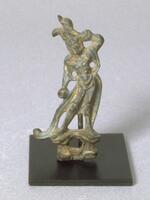
Chinese (Chinese (culture or style))
Dvarapala (guardian figure) from a Buddhist altar
618 – 907
Gift of Mrs. Caroline I. Plumer for the James Marshall Plumer Collection
1963/1.81
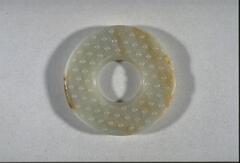
Chinese (Chinese (culture or style))
Bi disk
9794 BCE – 220 CE
Museum purchase from the collection of Max Loehr
1960/2.96
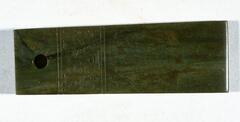
Chinese (Chinese (culture or style))
Ceremonial Blade
960 – 1279
Gift of the Estate of Agnes E. Meyer
1971/2.98

Dogon (Dogon (culture or style))
Ritual Staff
20th century
Gift of Dr. and Mrs. Irving F. Burton
1975/1.69
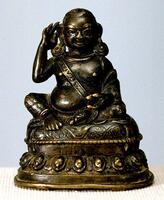
Gift of Dr. and Mrs. Leo S. Figiel and Dr. and Mrs. Steven J. Figiel
1981/2.56

Indian (Indian (South Asian))
Ambika
17th century
Gift of Dr. and Mrs. Leo S. Figiel and Dr. and Mrs. Steven J. Figiel.
1975/2.114
![The jina Malli sits in the lotus position on an inlayed cushion on a tiered throne. Seated with his hands folded in a gesture of meditation, he is surrounded by a number of figures representing other jinas, attendants and demigods. In the center in front of the throne sits the goddess Ambika with a child on her lap. On the first tier of the throne sit two figures that may represent donors. On the next left are nine mounds representing the nine planets [navagraha], five to his right and four to his left. At the base of his seat are two stylized lions and this is flanked by a male and female demigod. On the arch surrounding the figure at his level a standing jina figure is to each side and cauri bearer is on the outside of each of them. At his shoulders, the cross bars of the throne back end in stylized makara heads with jewels hanging from their mouths. A seated jina adorns the arch to each side of his head and elephants surmount them with an umbrella over his head with a dancing figure atop it. The who The jina Malli sits in the lotus position on an inlayed cushion on a tiered throne. Seated with his hands folded in a gesture of meditation, he is surrounded by a number of figures representing other jinas, attendants and demigods. In the center in front of the throne sits the goddess Ambika with a child on her lap. On the first tier of the throne sit two figures that may represent donors. On the next left are nine mounds representing the nine planets [navagraha], five to his right and four to his left. At the base of his seat are two stylized lions and this is flanked by a male and female demigod. On the arch surrounding the figure at his level a standing jina figure is to each side and cauri bearer is on the outside of each of them. At his shoulders, the cross bars of the throne back end in stylized makara heads with jewels hanging from their mouths. A seated jina adorns the arch to each side of his head and elephants surmount them with an umbrella over his head with a dancing figure atop it. The who](/media/W1siZiIsIjIwMjIvMDUvMjUvMnp2bHlnYzJuX2RlZmF1bHQuanBnIl0sWyJwIiwidGh1bWIiLCIyNDB4MjAwIl1d?sha=41927aa38309f645)
Indian (Indian (South Asian))
Malli shrine, dated VS 1528 [1471 A.D.]
1471
Gift of Dr. and Mrs. Leo S. Figiel and Dr. and Mrs. Steven J. Figiel.
1975/2.121
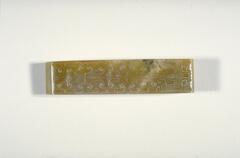
Chinese (Chinese (culture or style))
Scabbard Ornament for Sword
1998 – 1999
Museum purchase for the James Marshall Plumer Memorial Collection
1961/2.86

Chinese (Chinese (culture or style))
Buddha, standing, in vitarka mudra
7th century
Museum purchase for the James Marshall Plumer Memorial Collection
1964/2.97
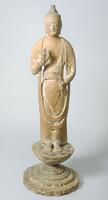
Japanese (Japanese (culture or style))
Bodhisattva Padmapani (Avalokiteshvara; Japanese, Kannon), from Kôfukuji
12th century
Museum purchase made possible by the Margaret Watson Parker Art Collection Fund
1969/1.106
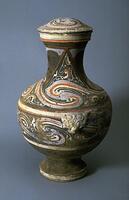
Chinese (Chinese (culture or style))
Large covered hu (wine storage jar) with molded taotie masks and painted designs of stylized clouds and Mount Penglai
01/01/9901 BCE
Gift of Domino's Pizza, Inc.
1993/1.77.1-2
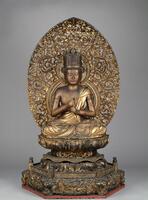
Japanese (Japanese (culture or style))
Vairocana Buddha (Japanese, Dainichi Nyorai)
17th century
Museum purchase made possible by the Margaret Watson Parker Art Collection Fund
2003/2.59.1
Loading…
